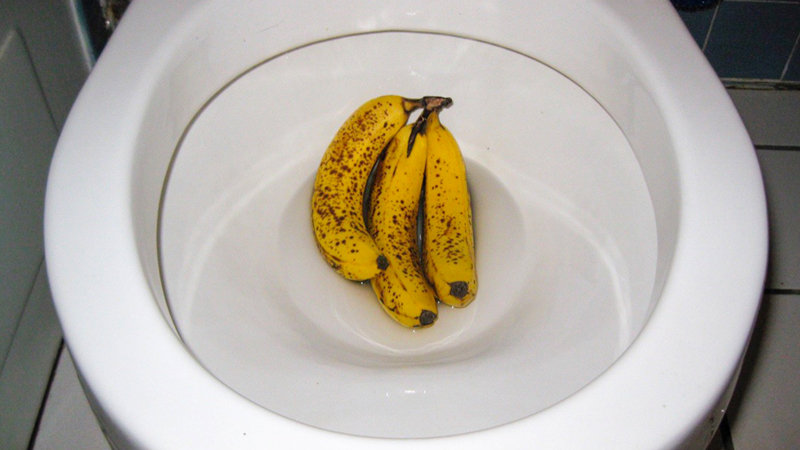Are You Allowed to Flush Food Down the Toilet?
Are You Allowed to Flush Food Down the Toilet?
Blog Article
Here down the page you can get a good deal of sensible information on the subject of Is it safe to flush food (especially rice) down the toilet?.

Introduction
Many people are often confronted with the predicament of what to do with food waste, specifically when it pertains to leftovers or scraps. One common question that develops is whether it's fine to flush food down the toilet. In this write-up, we'll delve into the reasons why people could think about flushing food, the consequences of doing so, and different approaches for appropriate disposal.
Reasons why individuals could think about purging food
Absence of awareness
Some people might not be aware of the potential harm triggered by purging food down the bathroom. They may wrongly believe that it's a harmless practice.
Convenience
Purging food down the toilet may seem like a quick and very easy remedy to throwing away unwanted scraps, especially when there's no nearby trash bin available.
Laziness
In many cases, individuals might just pick to flush food out of large negligence, without thinking about the consequences of their activities.
Repercussions of flushing food down the commode
Environmental impact
Food waste that winds up in rivers can contribute to air pollution and damage water communities. In addition, the water utilized to purge food can strain water sources.
Plumbing concerns
Purging food can lead to clogged up pipes and drains pipes, causing pricey pipes repair work and inconveniences.
Sorts of food that need to not be flushed
Fibrous foods
Foods with fibrous textures such as celery or corn husks can obtain entangled in pipes and cause obstructions.
Starchy foods
Starchy foods like pasta and rice can soak up water and swell, bring about blockages in pipelines.
Oils and fats
Greasy foods like bacon or cooking oils must never ever be flushed down the bathroom as they can strengthen and cause obstructions.
Appropriate disposal methods for food waste
Utilizing a garbage disposal
For homes geared up with waste disposal unit, food scraps can be ground up and purged with the pipes system. Nevertheless, not all foods appropriate for disposal in this fashion.
Recycling
Certain food packaging materials can be recycled, lowering waste and minimizing environmental impact.
Composting
Composting is an environment-friendly method to dispose of food waste. Organic materials can be composted and made use of to improve dirt for horticulture.
The value of appropriate waste management
Reducing ecological damage
Proper waste management practices, such as composting and recycling, help decrease contamination and preserve natural deposits for future generations.
Securing plumbing systems
By staying clear of the practice of flushing food down the commode, property owners can prevent expensive plumbing fixings and preserve the honesty of their plumbing systems.
Verdict
In conclusion, while it might be alluring to flush food down the bathroom for comfort, it is very important to recognize the potential repercussions of this action. By adopting appropriate waste monitoring techniques and getting rid of food waste properly, people can add to much healthier pipes systems and a cleaner atmosphere for all.
FLUSH FOOD DOWN THE TOILET?
FLUSHING FOOD CAN CAUSE BLOCKED DRAINS IN YOUR HOME
All of the plumbing fixtures in your home are connected to the same sewer pipe outside of your home. This outdoor sewer pipe is responsible for transporting all the wastewater from your home to the Council sewer mains. Even small pieces of food that go down the kitchen sink can cause problems for your sewer. It should therefore be obvious that flushing larger bits of food, such as meat, risks a clog in either the toilet itself or the sewer pipes. Flushing greasy food is even more problematic because oil coagulates when it cools, coating the interior lining of your pipes.
THE TOILET IS NOT A BIN
Food isn’t the only thing that people shouldn’t be flushing down the toilet. People use the toilet to dispose of all kinds of things such as tampons, makeup wipes, dental floss, kitty litter and even underwear. Water goes to great lengths to educate residents about the high costs and stress placed on wastewater treatment systems simply from people flushing the wrong stuff down the toilet. It costs taxpayers millions of dollars each year, and homeowners thousands in blocked drain repairs.
FLUSHING FOOD IS A WASTE OF WATER
Flushing food is a waste of our most precious resource - water. In June this year Level 1 water restrictions were introduced to protect water supply from drought conditions. Much of New South Wales continues to be affected by prolonged drought with recent figures revealing up to 97 per cent of the state remains in drought. Depending on whether you have a single or dual flush toilet, every single flush uses between five and 11 litres of water. In the current climate this is a huge amount of water to be wasting on flushing food that should be placed in the bin (or better yet, the compost).
https://www.jabplumbingsolutions.com.au/blog/can-you-flush-food-down-the-toilet

Do you appreciate reading up on What Can Happen If You Flush Food Down the Toilet?? Make a remark below. We will be glad to know your responses about this blog posting. We hope that you visit us again before long. For those who enjoyed our page please be sure to pass it around. Thanks a lot for your time invested reading it.
Request Service Report this page